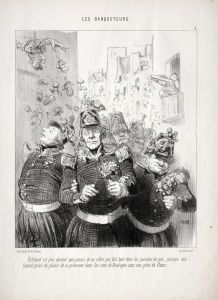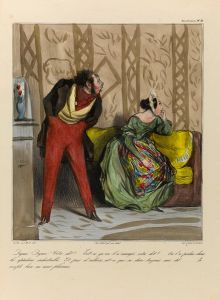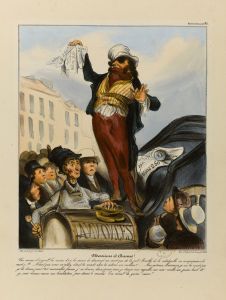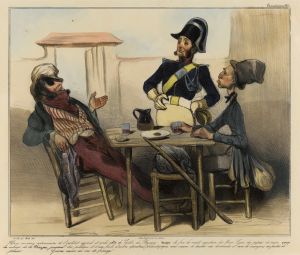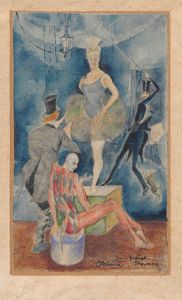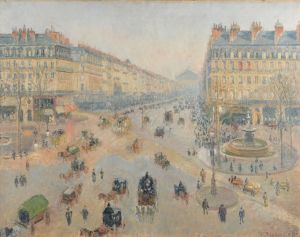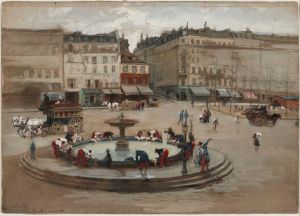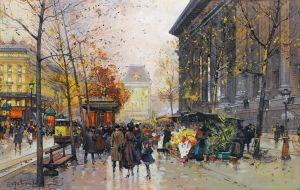
Two Saltimbanques
A hand-painted replica of Honoré Daumier’s masterpiece Two Saltimbanques, meticulously crafted by professional artists to capture the true essence of the original. Each piece is created with museum-quality canvas and rare mineral pigments, carefully painted by experienced artists with delicate brushstrokes and rich, layered colors to perfectly recreate the texture of the original artwork. Unlike machine-printed reproductions, this hand-painted version brings the painting to life, infused with the artist’s emotions and skill in every stroke. Whether for personal collection or home decoration, it instantly elevates the artistic atmosphere of any space.
"Two Saltimbanques" is a painting by the French artist Honoré Daumier, created around 1865-1866. Daumier, known for his satirical works and keen observations of society, often depicted scenes from everyday life, including the lives of entertainers and the working class. This painting is a poignant representation of two street performers, or saltimbanques, a subject that Daumier revisited in several of his works.
The painting portrays two figures, a man and a boy, who are likely father and son, standing against a stark, almost barren backdrop. The older man, dressed in a tattered costume, holds a drum, while the younger boy, also in ragged clothing, stands beside him with a somber expression. The simplicity of their attire and the desolate setting emphasize the hardships and marginalization faced by street performers during the 19th century.
Daumier's use of muted colors and loose brushwork in "Two Saltimbanques" adds to the melancholic mood of the painting. The figures are rendered with a sense of weight and presence, highlighting their physical and emotional burdens. The artist's empathetic portrayal invites viewers to reflect on the dignity and resilience of these individuals, despite their challenging circumstances.
Honoré Daumier (1808-1879) was a prolific artist, producing thousands of works in various media, including painting, sculpture, and lithography. He is particularly renowned for his caricatures and political cartoons, which critiqued the social and political issues of his time. Daumier's work often focused on the lives of ordinary people, capturing their struggles and humanity with a blend of realism and compassion.
"Two Saltimbanques" is part of a broader series of works by Daumier that explore the theme of itinerant performers. These works are significant for their social commentary, as they shed light on the often-overlooked lives of those on the fringes of society. Daumier's sympathetic depiction of saltimbanques contrasts with the more glamorous portrayals of performers in other contemporary artworks, offering a more nuanced and realistic perspective.
The painting is housed in the Musée d'Orsay in Paris, which holds an extensive collection of 19th-century art. The museum's collection includes several other works by Daumier, reflecting his importance as an artist and social commentator of his era. "Two Saltimbanques" remains a powerful testament to Daumier's ability to convey deep emotional truths through his art, making it a significant piece in the study of 19th-century French painting.
In summary, "Two Saltimbanques" by Honoré Daumier is a compelling depiction of street performers that highlights the artist's skill in capturing the essence of human experience. Through his empathetic portrayal and masterful technique, Daumier offers a poignant commentary on the resilience and dignity of those living on the margins of society.








